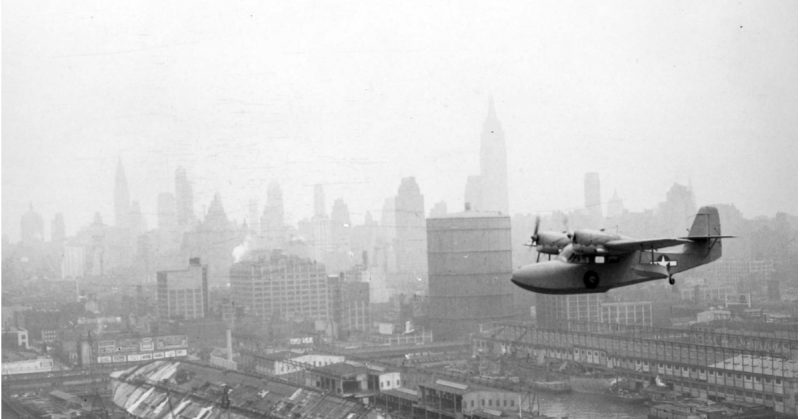Thomas Fitzpatrick, WWII and Korean War veteran who stole and landed a plane at 3 am in front of a bar in New York City while being intoxicated. Two years later, he did it a second time (drunk, again) because a bar patron didn’t believe him.
We all enjoy a good night out on the town. But Thomas Fitzpatrick took his celebratory revelry to an entirely new level. He managed to create an urban legend––only this one is true if the reports from the US authorities are anything to go by.
Fitzpatrick ended up being fined $100 (about $900 in today’s money when adjusted for inflation) for his first unauthorized night flight. He was lucky the plane’s owner did not press charges, or he would’ve been in real trouble.
Not once, but twice, he flew a plane into New York City illegally. The first time, he did it for the heck of it; the second time was two years later when he was drunk and telling the guy sitting next to him at the bar about his first flight.
When his new drinking pal did not believe him, what did Thomas Fitzpatrick do? He went off, stole another plane, and repeated the entire process to the immeasurable surprise of his new friend.
However, we are not dealing with some disreputable drunk. Thomas Fitzpatrick was a decorated war hero. He fought in WW2 and the Korean War, two of America’s bloodiest wars, and lived to tell the tale.
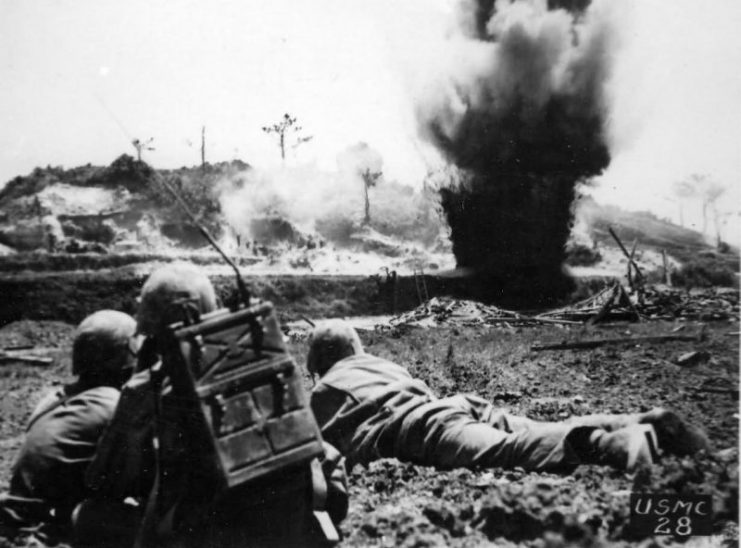
Not much is known about Thomas Fitzpatrick’s childhood. We do know that he was born on April 24, 1930, in Washington Heights, Manhattan, New York. He joined the US army during the Second World War and fought in the Pacific Theater until he was honorably discharged at the war’s end.
However, even though the historical sources claim that Fitzpatrick was a Marine during World War 2, it does seem strange. Even if he joined up in the final year of 1945, he would still have been only fifteen. The age for admission into the US armed forces was 18, or 17 with parental consent.
Of course, judging by the man’s subsequent pluck and complete disregard for the rules, he probably lied about his age.
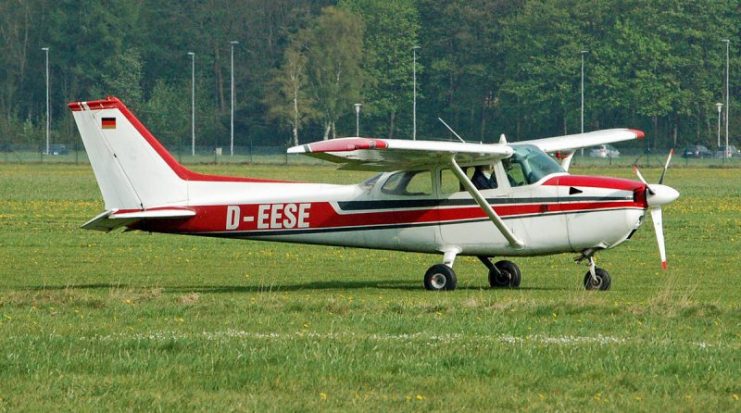
Huhu Uet – CC BY-SA 3.0
A few years later, he rejoined the army to fight in the Korean War in 1949. It was here that Fitzpatrick or “Tommy Fitz,” as his buddies called him, would truly shine. The young man, who was now officially allowed to be a soldier showed great bravery, subsequently receiving the Silver Star and the Purple Heart, the latter being the highest US military decoration.
We can learn about his courage from the citation that came with his Purple Heart:
“During a strategic withdrawal, Corporal Fitzpatrick noticed a wounded officer, about 100 yards forward of his position. In attempting a rescue, he and a companion were seriously wounded. Cpl. Fitzpatrick — despite severe pain and loss of blood — made it back to safety, directed a second successful rescue party, organized and provided covering fire to support the rescue.”
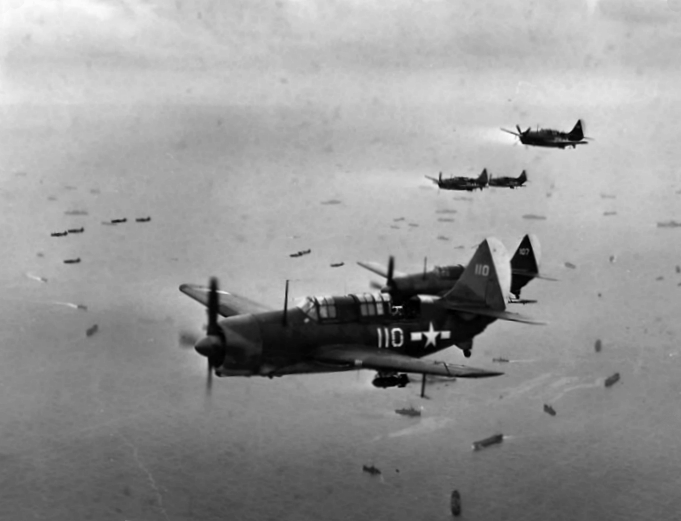
Thomas Fitzpatrick quit Korea and returned to the US in 1952. He soon sought out gainful employment and ended up a unionized steam lifter in New Jersey.
It was during this time that he was finally able to pursue his passion for flying. In his spare time, Fitzpatrick took flying lessons at the Teterboro School of Aeronautics––a skill that would soon take him to new heights in the annals of drunken antics.
Tommy Fitz, as his drinking buddies called him, enjoyed the occasional stay in Upper Manhattan where he would indulge in some light drinking. On September 29, 1956, at close to 3 am, he found himself in a corner bar as the center of attention during a bachelor party.
It’s safe to say that things started to get out of hand. As many of us know, boasting and betting are two integral parts of the parkour of drunkenness.
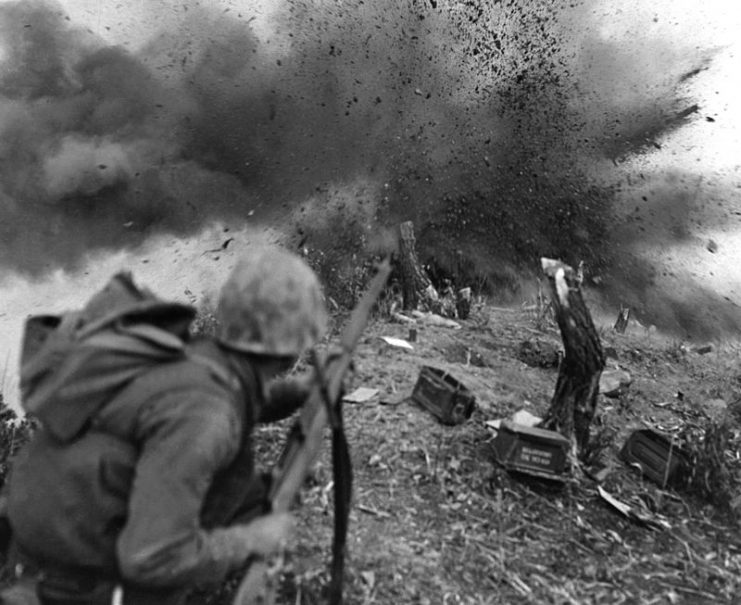
One of Tommy Fitz’s buddies said that he could not make it from New Jersey to Manhattan in 15 minutes. Tommy Fitz felt he had no choice but to take the man up on the challenge. So, he disappeared to prove him wrong.
It wasn’t long before the bar patrons heard an airplane. It sounded as if the plane was flying above the bar. Naturally, everybody vacated the establishment and ran out onto the street.
A red and white Cessna navigated its way between the skyscrapers of New York. It was an incredible sight but a dangerous feat. How Fitzpatrick managed to squeeze the 32-foot wingspan through the streets without touching the frontage of any of the buildings, especially in the drunken state he was in, is a miracle. The ancient Roman God of Wine, Bacchus, must have laid a protective hand over Tommy Fitz that night.
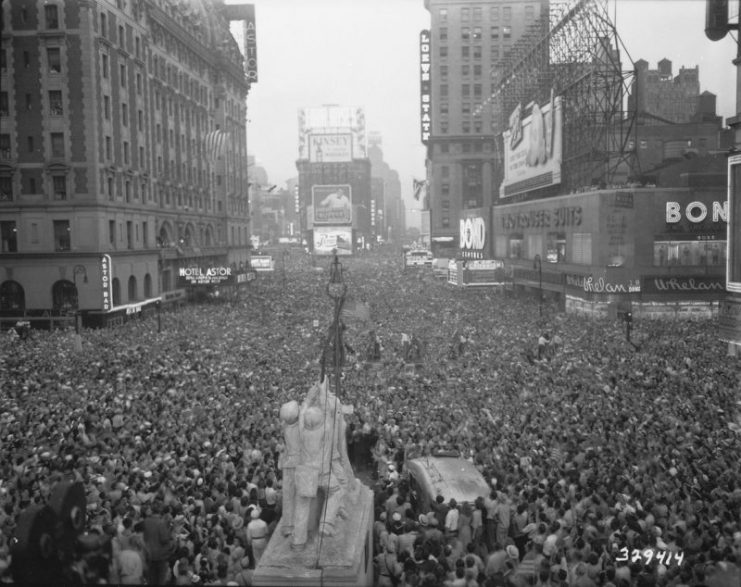
The Cessna gradually descended, landing on the 60-foot wide stretch of St. Nicholas Avenue close to 191st Street. He landed at 3 am — just in time for last orders. He taxied the plane to the front of the bar, jumped out and, ignoring his friends, ran inside to order a beer before the bar closed.
Naturally, the police arrived at the scene. Fitzpatrick told them that he had borrowed the plane for his night flight with the explanation that he just needed to fly. It goes without saying that his telling of the story involved much drunken embellishment. Not knowing what else to do, the cops arrested him.
“A fine landing” and “a feat of aeronautics,” was what they called it in the New York Times the next day.
It was a “100,000-to-one shot,” almost impossible, according to Sergeant Harold Behrens of the Police Aviation Bureau.
Fitzpatrick was arraigned in court for grand larceny and for the violation of the City of New York’s administrative code that forbids the landing of planes within the city’s limits.
“A great many terrible things could have happened,” said Judge Edward J. Chapman. He set Fitzpatrick’s bail at $5,000 (approx. $45,000 today) “as a deterrent to other foolish young men who get drunk and fly a plane.”
Ultimately, the charge of grand larceny was dropped because the plane’s owner did not wish to press charges — he actually found the act funny.
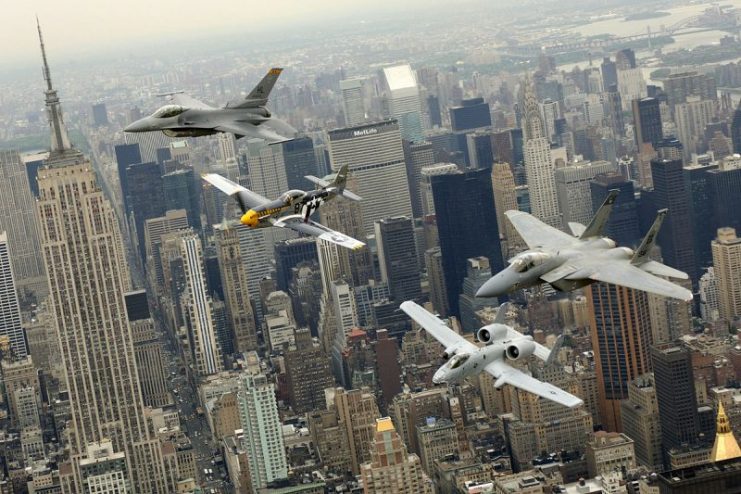
It goes without saying though that Fitzpatrick’s temporary pilot’s license was suspended for six months. He was also charged with a $100 fine. Despite having clocked up the hours, he never did get his license after that.
Almost getting off scot-free, he went back to his quiet life working as a steamfitter. He married his wife Helen in June 1958. Thomas Fitzpatrick had learned his lesson. He would never pull the same stunt again.
Wrong! The lure for drunken adventure and fool’s pride was too great.
Two years later, almost on the precise date of his famous night flight, Tommy Fitz found himself in a bar again. This time, he had a booze-up with another patron who did not believe that he had landed a plane in NYC.
This was too much for Tommy Fritz. He went off and got himself another plane. And yes, he was as drunk as a skunk this time around too.
This was how a New York bus driver described Tommy Fitz’s landing on Amsterdam Avenue 191st Street on October 4, 1958:
“I just got into my seat when all of a sudden I heard something that sounded like a large fan… I looked in my rearview mirror and saw this plane coming at me. He landed alongside me. The plane hit the ground and bounced 20 feet in the air. I thought he was going to take off again. Then he hit the ground again and taxied down to 187th Street.”
John Johnson, 34, also witnessed the daring spectacle. This is how he described his version of events to the authorities:
“I didn’t know what to imagine; I slammed on my brakes, and a plane skidded over the top of my car and made a perfect landing ahead of me. I saw a [tall, blond, and husky] man [wearing a gray suit] get out and run toward St. Nicholas Avenue on 187th Street.”
Fitzpatrick was arraigned for grand larceny for a second time, but this time, it stuck.
“Your trouble is you do not know when to stop drinking,” said Judge Mullen during the court proceedings. “The last time you paid a $100 fine. If you had been seriously and properly jolted the first time, it’s possible this would not have occurred a second time, and maybe you wouldn’t be standing here today. There is no doubt in my mind that you were intoxicated and were in a measure dared by a drinking companion when you were in this silly semi-intoxicated condition.”
The Judge did take Fitzpatrick’s exemplary military record into consideration when he made his verdict. “The best I have ever seen, without a doubt,” referring to his Purple Heart and Silver Star, and his otherwise proper civilian conduct. Although he added, “You’re not going to make an airstrip out of a New York City street. There is no doubt that making airstrips of New York City streets is fraught with danger.”

Fitzpatrick replied that it was “the lousy drink” that caused him to pull the stunt. However, Mullen was unyielding, and Fitzpatrick was sentenced to six months in prison.
Thomas Fitzpatrick’s flights are, to this day, the stuff of legend.
Even though he lived in New Jersey, he liked to hang around with his friends in the bars of NYC. Fred Hartling, the younger brother of Tommy Fitz’s good friend, described the night flier as a charismatic, adventurous type who would “butter up my mother” to let him sleep over at the Hartlings’ place.
“Tommy had a crazy side,” he said. “The whole group of them, my brother’s friends, were a wild bunch.”
Read another story from us: Bored USMC Pilots Used Their Planes to Make Ice Cream in WWII
Thomas Fitzpatrick never did fly into NYC again. He went back to working as a steamfitter. He was active in his local community and very well respected. He lived quietly with his three sons and his wife, Helen.
On September 14, 2009, Thomas Fitzpatrick died at the age of 79. He will always be remembered as a war hero and the most daring and talented civilian night flier.
